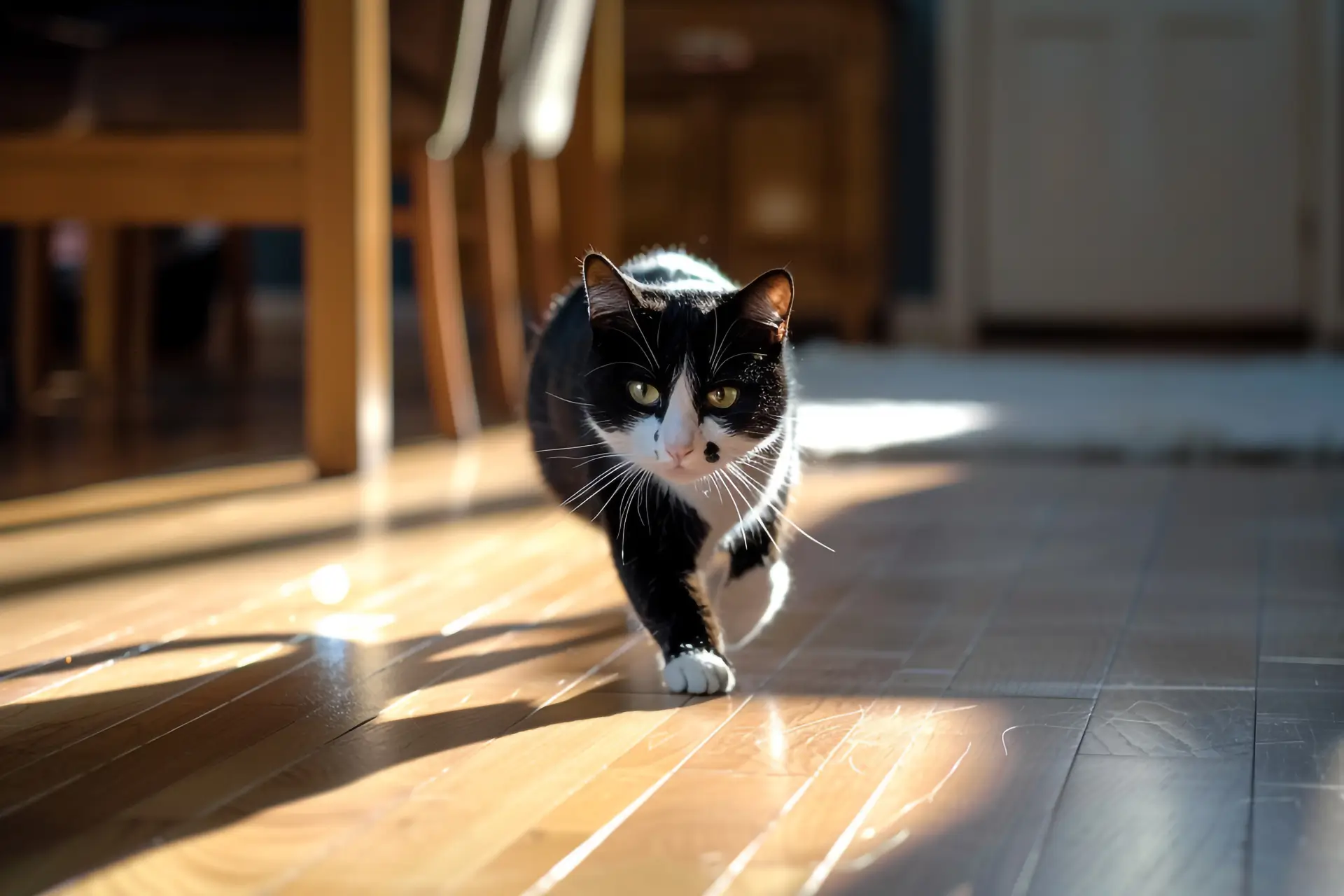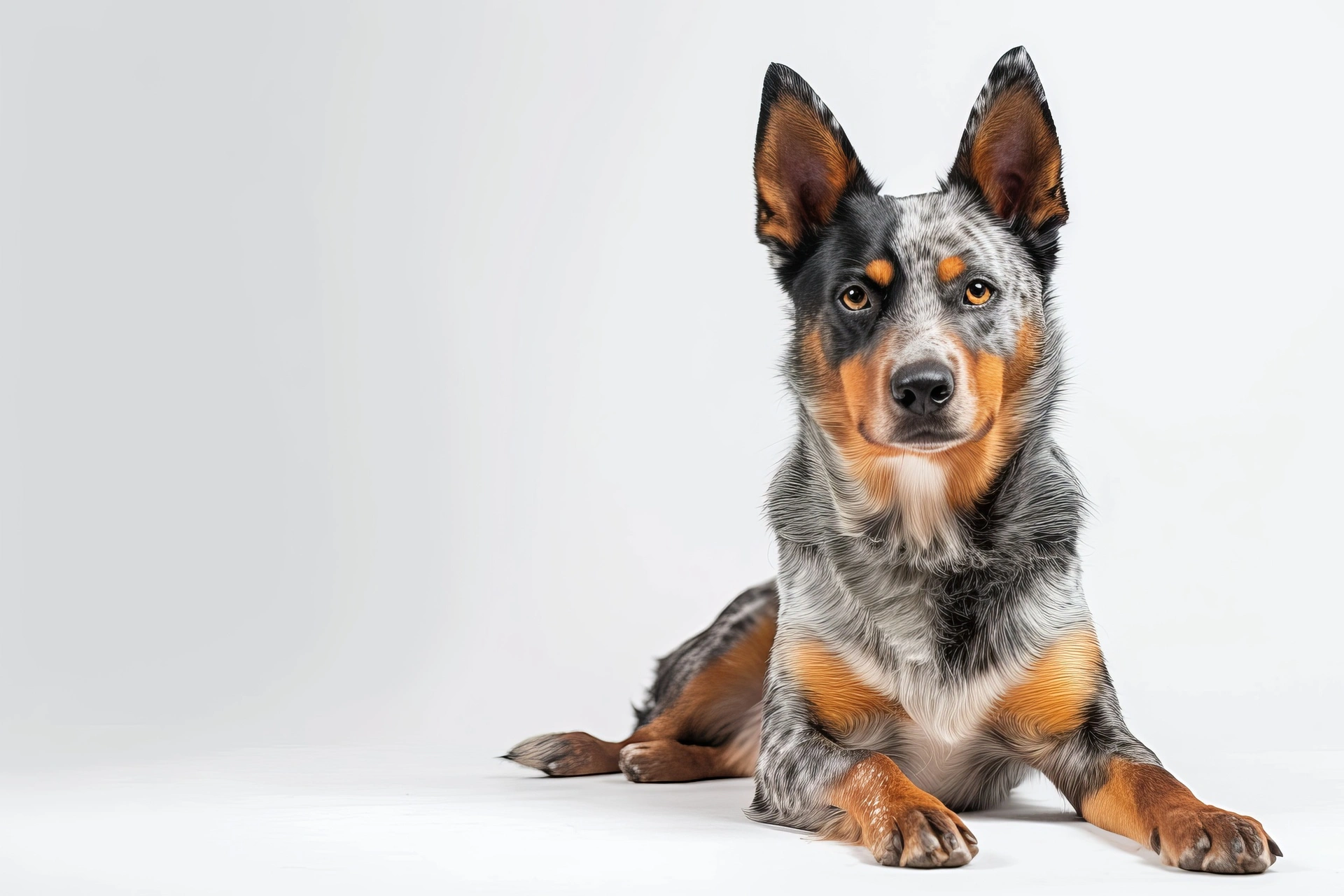Do you love smart, energetic dogs? Then you must know the Australian Cattle Dog (ACD). People lovingly call them the “Blue Heeler” or “Red Heeler.” This breed is amazing. They are famous for their incredible endurance and strong herding instincts. They are highly intelligent and very hard-working dogs. ACDs were specifically bred to drive cattle in tough places. Farmers, ranchers, and active pet owners all adore this dog. This guide explores all you need to know about the breed. We will look at their history and core needs. This blog will help you decide if a Cattle Dog is right for your home.
The Fascinating History of the Australian Cattle Dog
The Australian Cattle Dog story started with a real need. Early settlers needed a dog for vast cattle properties. Imported European dogs could not handle the extreme heat. They also lacked the required stamina. This led to a special breeding program in the 1800s. Breeders crossed Scottish Blue Merle Collies with native Dingoes. Dingoes provided the needed toughness and great endurance. This cross gave the dogs a quiet working style. Later, breeders also included Dalmatians. The Dalmatians added loyalty and their signature speckled coat. This careful mix created a dog perfect for the challenging work. They would “heel,” or nip at the cattle’s heels, to move them. The ACD soon became essential for ranching.
Related Article: Dogs Eat Strawberries: A Complete Guide
Characteristics: Appearance, Temperament, and the “Heeler” Name
They are built tough for hard work. They are compact, muscular, and very agile.
1. Appearance
ACDs are medium-sized dogs. They usually weigh between 35 and 50 pounds. They have an athletic and robust body. Their coat is dense and resists bad weather. It has either red or blue speckles. The “Blue Heeler” nickname comes from their blue-tinged coat. This is black hair mixed with white hair. Red Heeler dogs show red speckles throughout their coat. Interestingly, all ACD puppies are born mostly white. Their adult color develops in the first weeks of life. They have sharp, erect, triangular ears. The ACD generally has a long, bushy tail.
2. Temperament
ACDs combine intelligence with a very strong work drive. They learn commands fast, but their sharp minds need constant mental challenges. These dogs have endless energy. They need much daily exercise to avoid being destructive. ACDs deeply bond with their families. They are naturally protective and make excellent watchdogs. While loyal, they can be stubborn. They need consistent, clear training and strong guidance. They were bred to work all day long. They must have a consistent job or activity.
Lifespan: Longevity and the Legend of Bluey
The Australian Cattle Dog is known for living a long time. The average lifespan is 12 to 16 years. Many dogs live even longer with proper care. The most famous example is Bluey. This ACD holds the world record for the longest life. Bluey lived an incredible 29 years and 5 months!
Comprehensive Training for a Well-Adjusted ACD
Start training your ACD early. Consistent and positive methods work best for this breed. Begin training and socialization immediately. This prevents common issues like nipping and barking. Always use praise, treats, and toys to reward good behavior. Positive reinforcement is the best tool. Be consistent with your rules. This helps their quick learning stick easily. Expose your puppy to many new people and places. Good socialization builds a confident adult dog. Enroll in puppy classes early. This teaches them how to interact well with others.
ACDs naturally nip at heels. Immediately redirect this to a strong toy or herding ball. Teach your dog to relax when asked. This helps control their intense energy drive. Never allow them to nip at people. Always redirect this unwanted behavior. They need jobs to do every day. Use puzzle toys and teach new tricks. This keeps their smart minds happy and busy.
Nutrition for Peak Performance & Health
ACDs need a high-protein diet for their energy levels. Feed them high-quality food. Look for beef, chicken, or fish as the main ingredient. Fats like fish oil are important. They keep the coat and skin healthy. Supplements like glucosamine can help their joints. Always consult your vet first. Active dogs need more calories. Pet ACDs need careful food monitoring. This prevents them from becoming overweight.
Essential Grooming for Their Weather-Resistant Coat
Their dense coat is low maintenance but sheds heavily twice a year. They “blow their coat” two times a year. This is called Coat Blowing. Brush daily during these heavy shedding times. Brush weekly with a slicker brush or rake. This removes dead hair. Never trim or shave their coat. This damages its natural protection. Bathe them only when they are very dirty. Brush their teeth every day. This prevents serious dental disease. Check their erect ears weekly for dirt. Clean them as needed. Trim their nails regularly. Active dogs may wear them down naturally.
Health & Potential Conditions: What Owners Should Know
ACDs are generally healthy dogs. You must be aware of certain health issues. Hip Dysplasia affects the hip joint formation. Elbow Dysplasia is a condition that affects the elbow joint. Progressive Retinal Atrophy (PRA) causes gradual blindness. Congenital Deafness is common in this breed. This is especially true in Blue Heeler puppies. Always get a check for urinary or bladder issues. Ask breeders for health screening records. Regular vet visits are important for early detection.
Australian Cattle Dog vs. Australian Stumpy Tail Cattle Dog
These breeds are different, especially their tails. They have a long, natural tail. The Australian Stumpy Tail Cattle Dog has a short, natural tail. The ACD is more muscular and compact. The Stumpy Tail Cattle Dog is leaner, lighter, and more square. The ACD is loyal and protective. The Stumpy Tail is highly alert and independent.
| Features | Australian Cattle Dog | Australian Stumpy Tail Cattle Dog |
| Tail | Has a long, natural tail. | Has a short, natural Stumpy Tail Cattle Dog or no tail. |
| Build | More muscular and compact. | Leaner, lighter, and more square. |
| Temperament | Loyal, protective, very intelligent. | Highly alert, energetic, and independent. |
Is an Australian Cattle Dog the Right Pet For You?
While intelligent, loyal, and loving, the Australian Cattle Dog is not the right breed for everyone. Their intense needs require a specific type of owner and lifestyle.
Active Households Only:
ACDs are ideal for individuals or families who lead an extremely active lifestyle and enjoy outdoor activities such as hiking, running, cycling, or dog sports (agility, flyball, obedience).
Exercise Needs: They require a minimum of two to three hours of vigorous physical activity daily, in addition to mental stimulation. A simple walk around the block is not enough.
Mental Stimulation: Beyond physical exercise, they need a “job” – whether that’s advanced training, puzzle toys, or canine sports – to keep their intelligent minds engaged.
Not for First-Time Owners:
Due to their strong will, independent nature, and high drive, ACDs are generally not recommended for first-time dog owners. They require an experienced hand and consistent leadership.
Living Environment:
Not Apartment Dogs: They are not well-suited for apartment living. A large, securely fenced yard is essential to provide space for them to run and play safely.
Secure Fencing: Their intelligence and athleticism mean they are excellent escape artists; fences must be high and secure.
Children and Other Pets:
Herding Instincts: Their strong herding instinct can manifest as nipping at the heels of small children or other pets. While trainable, this requires constant supervision and training in homes with young kids.
Socialization: With proper early socialization, they can co-exist peacefully with other pets, but their strong prey drive might make them challenging in homes with very small animals.
Loyalty & Protection:
They are incredibly loyal to their families and protective, making them excellent watchdogs. However, early and extensive socialization is crucial to ensure they are welcoming to trusted guests.
If you can meet their demanding exercise, training, and mental stimulation needs, an Australian Cattle Dog will be a devoted, intelligent, and incredibly rewarding companion.
Conclusion
The Australian Cattle Dog is an amazing, special breed. Their history shows their toughness and intelligence. Committing to their training and exercise is key. This ensures a happy, healthy life together. Whether working or just being your pet, the ACD is an excellent companion.
FAQs
How much exercise does an Australian Cattle Dog need daily?
Australian Cattle Dogs need at least 2-3 hours of vigorous physical activity every day, combined with mental stimulation. Simple walks are not enough; they need activities like running, hiking, agility training, or extensive play in a securely fenced yard.
Are Blue Heelers prone to nipping or biting?
Due to their strong herding instinct, ACD puppies and young dogs can be prone to “heeling” or nipping at the heels of people or other pets. This behavior can be managed with consistent early training, redirection to appropriate toys, and discouraging it immediately.
Can an Australian Cattle Dog live in an apartment?
No, Australian Cattle Dogs are not well-suited for apartment living. They have extremely high energy levels and require a large, securely fenced yard and ample space to run and play to prevent boredom and destructive behaviors.
Do Australian Cattle Dogs pick one person in the family?
ACDs often form a very strong, primary bond with one person in the family. While they are loyal to the entire household, they may show a clear preference for and deeper connection with their primary handler or the person who provides the most training and exercise.
What is the average lifespan of an Australian Cattle Dog?
Their average lifespan is between 12 to 16 years, making them a long-lived breed. With excellent care, nutrition, and regular veterinary check-ups, many can live even longer, with some reaching nearly 30 years!








